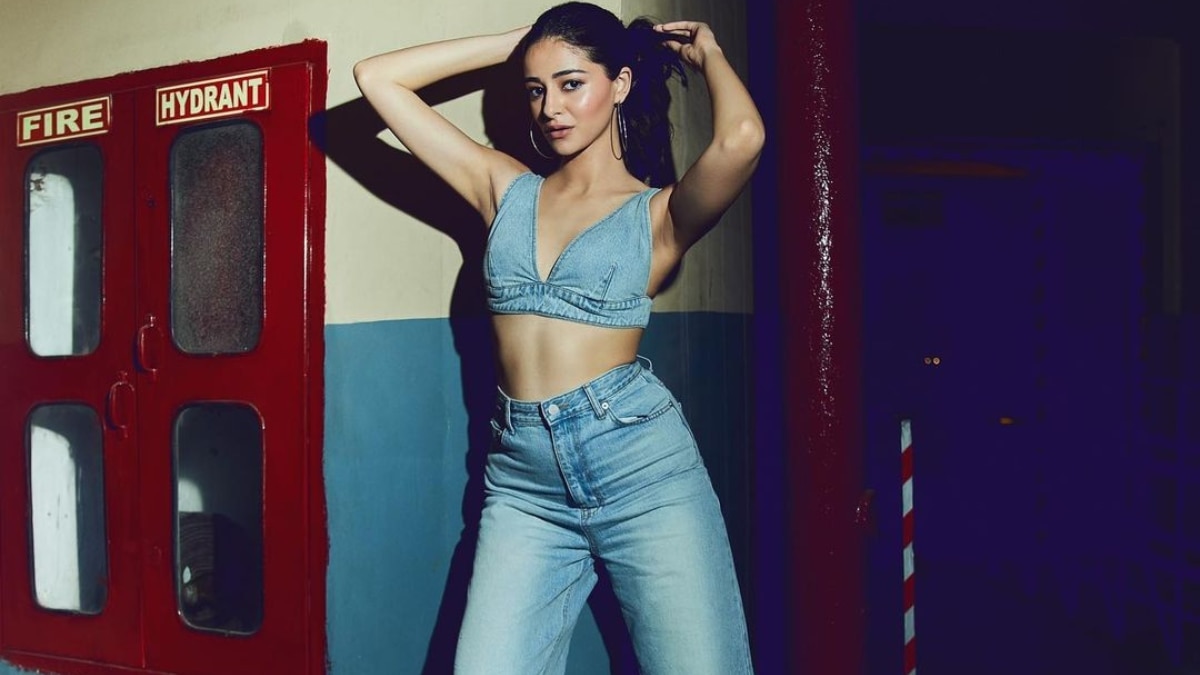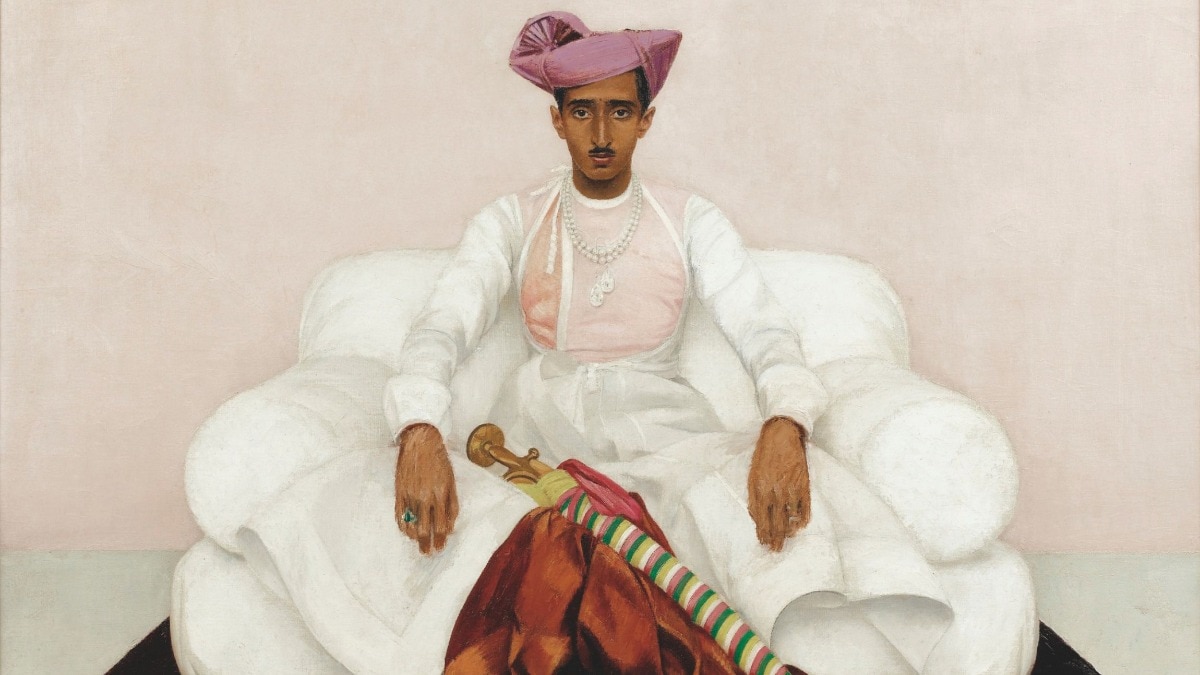The ultimate guide to buying sustainable denim
What to look out for before making a purchase, with advice from the experts.


Sustainable. Eco. Green. Conscious. Recycled. We regularly read these words on the tags of our clothes, but what do they actually mean? How do you know if what you are buying is actually good for the planet, and what do you need to look out for when shopping?
To clear up any confusion, we enlisted industry experts to help us compile the ultimate guide to building a sustainable wardrobe – starting with denim. In a bid to make the denim industry greener, many labels (including Reformation, Slvrlake, Levi's and Fanfare Label) are working hard to create a more responsible future for their respective companies, and to make it as simple as possible for their customers to shop green.
"There are so many great brands out there that are focusing on sustainability," notes Marc Lensen, head of global communication and branding at ISKO, the leading sustainable denim supplier which helps many brands improve their eco stand-point. "Denim, like many other products in the fashion industry, relies heavily on precious resources extracted from the earth, such as cotton and water. Our aim is to minimise our footprint as much as possible, by using fewer virgin raw materials, increasing recycled fabrics and also limiting the amount of water, energy, and chemicals used in the production process."
Although creating clothes can harm our world, there are plenty of brands working hard to leave as little impact as possible on our planet while creating stylish denim pieces we can love forever. Reformation is focusing on traceability in partnership with RefScale, which traces the carbon and water footprint of its garments. The brand is open about its effect on the world, which is vital for moving forward with sustainable fashion; accountability and traceability are both fundamental, as they help brands and consumers to know where improvements can be made.

Alongside traceability, the actual materials used are just as important to consider. Celebrity favourite Slvrlake (seen on the likes of Joan Smalls, Kendall Jenner and Hailey Bieber) uses hemp fabric that’s 100 per cent biodegradable and non-toxic. Hemp, which is grown without harmful chemicals, is considered one of the most environmentally friendly fibres because it uses half as much land as cotton does.
Choosing pieces that are built to last is also vital for a sustainable wardrobe. Shoppers should seek to invest in key pieces that will stand the test of time, rather than buying poorly made alternatives that need replacing regularly. For this reason, Levi's is one of the most well-known denim brands in the world, thanks to its jeans, jackets and other denim pieces that truly last a lifetime.
But what happens once you've finished with your garment? What you do with your old denim is just as important as shopping smartly – ensuring that clothes don't end up in landfills is crucial to shopping and living responsibly. Fanfare Label is a shining example of how fashion brands can reduce waste; it focuses on upcycled denim, turning excess clothing and textiles into unique contemporary designs.
To put it simply, when shopping for sustainable denim, there are four main factors to consider before you make your purchase:
1. Traceability–make sure you know where your garment has come from
2. Materials–understand what your garment is made from and how that can impact the environment
3. Longevity–invest in good-quality products that will last a lifetime
4. Circularity–check that the item can be recycled and given a new lease of life once you're done with it
Below, we meet Reformation’s Kathleen Talbot; Slvrlake’s Louise Edgley; Levi's Paul Dillinger; and Fanfare Label founder Esther Knight, who share their insights on shopping for denim sustainably.

Louise Edgley, Slvrlake: Lean in to timeless silhouettes in quality fabrics that will only get better with age. Selecting styles and washes that complement pieces in your existing wardrobe will ensure you get the most out of your denim.
Esther Knight, Fanfare Label: Check your labels for information about the country or origin, factory and materials. Is anything missing about the supply chain? Check for transparency–see if the brand knows about the full production process and tells you about it. Finally, check the materials–are there any certifications associated with the claims so that you know the materials, supply chain and processing have all been investigated?
Paul Dillinger, Levi's: Start with a simple question: how much use will I get out of this? Then consider the fabrication of the garment before you purchase it and whether it can be recycled at the end of its life. You’re basically asking, will I wear this enough and keep it long enough to justify the water, the electricity, and the materials that were used to make it?
What’s the biggest misconception about sustainable denim?

Louise Edgley, Slvrlake: That quality and authenticity can't be achieved in denim sustainably. It's all down to the materials you use. All of our indigo denim at Slvrlake is crafted from organic Italian fabrics and all of our hardware and labels are crafted from recycled materials.
Kathleen Talbot, Reformation: Price point is one of the biggest misconceptions. The product should reflect the true cost to people and the planet, and we can still deliver impact and a pair of jeans for less than £110. Limiting the number of steps, chemicals, energy, and water usage actually makes the jeans more affordable by reducing costs at the fabric and manufacturing level.
Esther Knight, Fanfare Label: Personally, I think misconceptions are down to not having enough information on the supply chain as a whole. Brands will often tell you part of the story and miss out on certain information about the factories and garment workers, focusing instead on the materials. Sustainability claims are difficult to assess due to the lack of information. Denim is one of the most harmful items to produce due to the finishing and dyeing processes containing hazardous materials. Therefore, it is highly important that workers are protected and corners are not cut in order to save costs.
Why is regular denim bad for the environment?

Kathleen Talbot, Reformation: Conventional denim is made using a water and a chemical-intensive process. We don’t use traditional chemicals that are harmful and require extra water to wash them out of garments. For example, our popular Cynthia high-rise straight-leg jeans are made using 685 gallons less water than a conventionally produced pair of jeans.
Paul Dillinger, Levi's: Our life-cycle assessment and numerous similar studies since have documented the large quantities of water, energy and chemical that typically go into denim production. It’s often said that it’s a 'thirsty' material to work with.
Esther Knight, Fanfare Label: Jeans are one of the most unsustainable fashion products on the market. According to Fashion Revolution, cotton is the thirstiest plant used, which requires 10,000 litres of water to produce just one pair of jeans and a t-shirt. Harmful chemicals are dyes used to achieve the colour and due to the amount of processing denim must go through, it can be very harmful to workers breathing in these chemicals.
At Fanfare Label, we use laser processing Ozone techniques, eliminating the use of these chemicals. The way regular denim jeans are made and designed makes it difficult to recycle and repurpose them after use–but it's vital that you can in order to prolong their life span and ensure multiple product life cycles.
Are there any other ways to be greener when shopping for denim?

Louise Edgley, Slvrlake: Buy better, buy less. Invest in classic silhouettes in quality fabrics built to stand the test of time. Also, sustainability shouldn’t finish at purchase. The way in which we care for our denim has an environmental impact as well as affecting the lifeline of your jeans. We recommend hanging to air between wears, spot cleaning with a damp cloth, then machine-washing on a cold delicate spin cycle when necessary – and always air dry.
Kathleen Talbot, Reformation: The greenest ways to shop are always renting, researching, and buying vintage. Do your research on the companies you plan to buy from; make sure they are using best practices to create clothing that isn't harmful to the planet. There are platforms out there enabling you to easily check the impact of your favourite fashion brands on the issues you care about, like Good on You.
Esther Knight, Fanfare Label: Slowing down and considering purchases often leads to more thoughtful, sustainable shopping. Bringing value back to the items we have in our wardrobes and new purchases means that we are more likely to cherish items and not regard fashion items as disposable. Look after your clothing, make it last and buy items that will be relevant in your wardrobe for years to come.
Why is traceability so important when shopping sustainably?

Louise Edgley, Slvrlake: Understanding the origin of a garment allows us to fully understand the environmental and social impact of creating it. This enables us to proactively respond to better practices and new technologies as they develop.
Kathleen Talbot, Reformation: Supply chain traceability is the only way to truly ensure that you know what you are buying, and how sustainably it was made. By having true transparency and accountability right back to the raw materials stage of a garment, you can allow customers more autonomy in where they put their buying power.
Esther Knight, Fanfare Label: Traceability is important as it looks after the workers and people who have been involved in the production right through to the end garment. It allows brands to deeper analyse the origin, fibres, materials, chemical dyes and workers involved in the supply chain. Without traceability, knowledge about the supply chain is not there and brands cannot guarantee sustainability or make positive changes where necessary.
Paul Dillinger, Levi's: It enables us–and our interested stakeholders–to understand and track the impact of those programs on the environments and the communities touched by our value chain.
Has the appetite from buyers for sustainable denim grown over the last few years?

Louise Edgley, Slvrlake: We've all become aware of the environmental impact of our choices and have started to demand real change. The industry as a whole has begun to pivot toward sustainability. There is still more work to be done but there is a big change on the horizon.
Kathleen Talbot, Reformation: We all wear denim; it's one of the mainstays of most wardrobes. It's promising to see the expanding offering of sustainable denim in the marketplace, from the big high-street brands to smaller independent labels. With social media, consumers have become more aware of the ethical impact of their everyday lives. People are more empowered with information than ever before and can choose for themselves what they want to buy and from where.
How can our readers tell if a brand is authentically sustainable?

Louise Edgley, Slvrlake: Ask the question to the brand directly if in doubt. Some brands actively share and others do not but you can always directly message a brand to find out.
Kathleen Talbot, Reformation: Unfortunately there's a lot of green-washing in the industry at the moment. Buzzwords like ‘natural’ or ‘biodegradable’ can perhaps misinform the customer into thinking a product is more sustainable than it is. Do thorough research.
Esther Knight, Fanfare Label: A good way to determine authenticity when it comes to sustainability is with certifications, which are used in fashion to regulate the supply chains and making of garments. A key certification in the use of organic cotton is GOTs – the leading standard for the sustainable processing of organic textiles. Every step of the supply chain is checked, from the harvesting of raw materials to processing, manufacturing, packaging and labelling. The certification also ensures that working conditions are safe and there is no discrimination or child labour occurring throughout the supply chain.
Ensure when a brand is talking about using organic cotton, it's certified by either the Organic Content Standard (OCS) or GOTs, otherwise there is no traceability. We also use the Global Recycled Standard (GRS) to show that the content of recycled materials in a product has been tracked and verified by a third party. Products with this certification highlight their commitment to responsible social, environmental and chemical practices in production.
What do you see for the future of sustainable denim?

Kathleen Talbot, Reformation: My vision is 100 per cent circular, climate-positive product. We hope that by constantly seeking out innovative technologies like FibreTrace, we will inspire other brands.
Paul Dillinger, Levi's: A more sustainable denim industry is more thoughtful and intentional in the design and product creation. We want to provide consumers with quality, more sustainable options–options that require fewer resources, that are enduring styles and fabrications, and that can ultimately be repaired, resold or recycled. Consumers have the power to demand this.
This piece originally appeared in Harper's Bazaar UK.










